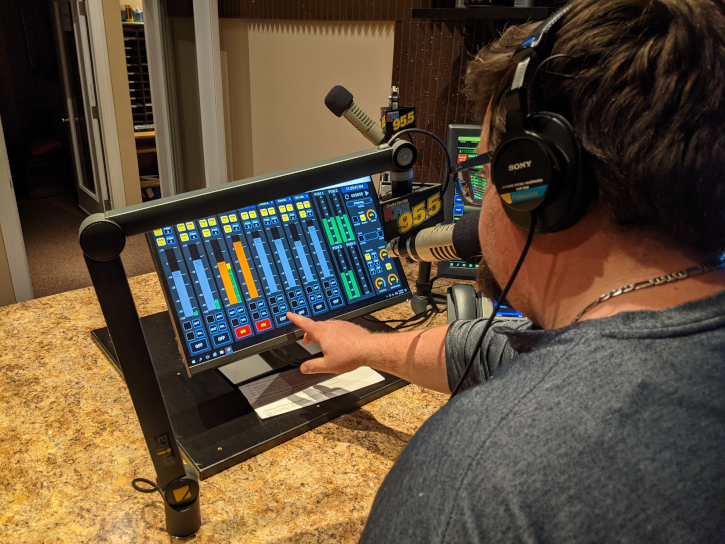
Over the last 24 years our little local radio station grew from serving a single city to having a network of 13 radio stations with studios in five cities.
Whether we were doing a live remote down at a local car dealership or trying to air live content from another city, it always involved having an operator in a local studio monitor levels and turn channels on or off on the board.
Then COVID hit, and addressing concerns that had lingered for a very long time became urgent. Fortunately, we had been researching options that would afford multiple personnel the flexibility to monitor, operate and execute full control of the network from any remote location.
[Read more Radio World articles about audio consoles and mixers]
Remote control of on-air programming has been around a long time, so that was no issue. Remote operation of control room mixers has been around a little while, and remained an option. But to truly give full control of the entire radio station (and network) to all our on-air staff consecutively narrowed things down to only a few options.
We wanted the ability to “do radio” without a “physical radio station.”
One of them was a clear winner. We took the leap and ordered the Axia iQs virtual mixing console. In a nutshell, the iQs is a 1RU computer that is routed to a central switch. It utilizes as many xNode Livewire digital network interface units that you may require, each capable of four inputs and four outputs of digital or analog audio signals along with GPIO options all routed to the switch.
Once set up, you have a virtual mixer that you can operate from a touchscreen monitor in a traditional radio studio, or from a laptop in your house, or from a cellphone on your boat. At your disposal are all of the capabilities of a large-scale studio (or network of studios), and you are able to configure and control them from anywhere.
The xNodes have a proven track record of reliability, but having a small one-rack unit replace a four-foot radio console with 300 wires attached to it was a bit of a stretch. And to think that the only cable attached to this “virtual console” was a single about the width of a straw.
Removing the miles of cables running to our studio and replacing a $20,000 18-fader digital console with a touchscreen monitor took a little faith. Especially when we were told that we were the first station in Canada to do so.
We anticipated a steep learning curve and were prepared to spend a month converting our main studio, four sister studios and 13 broadcast locations. But the engineers at Telos Alliance have made this system so user-friendly that we were using it within seven days of installation.
Axia has made this system user-definable and expandable. iQs has our staff amazed at its simplicity, our engineer thrilled with its flexibility and our accountant happy as a clam with the price.
Radio World User Reports are testimonial articles intended to help readers understand why a colleague chose a particular product to solve a technical situation.
Info: Cam Eicher at The Telos Alliance at 1-216-241-7225 or www.telosalliance.com.







